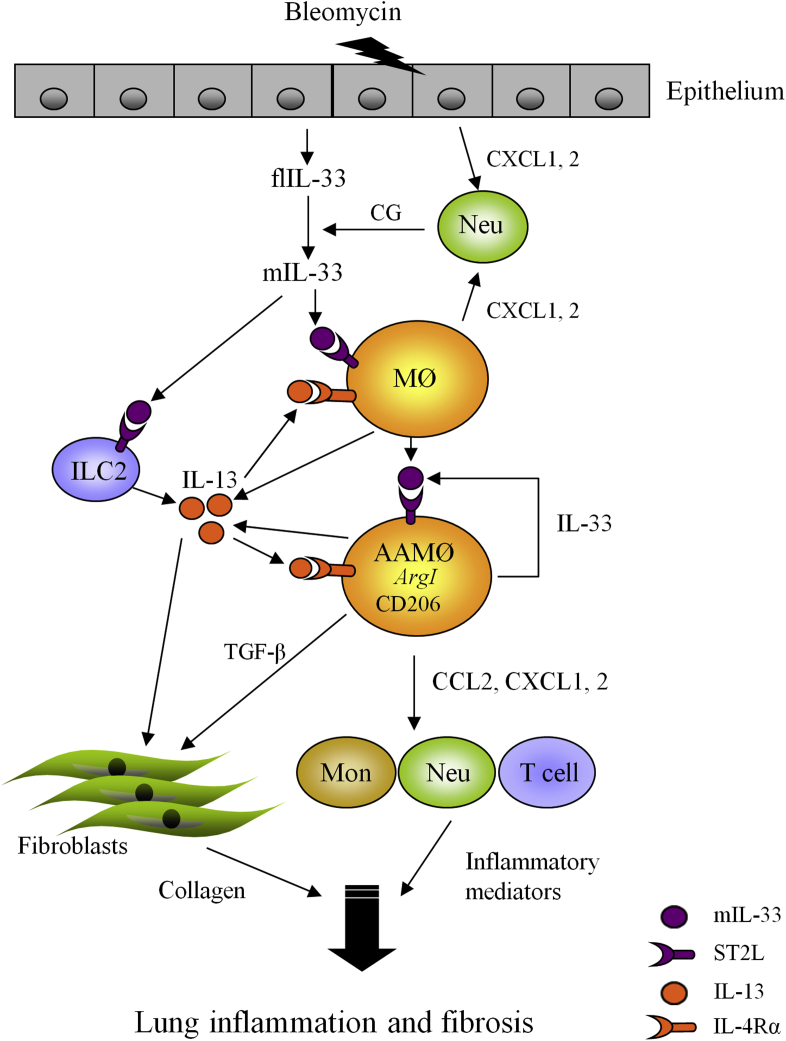Fig E6.
Schematic representation of the proposed mechanism of bleomycin (BLM)–induced IL-33 synthesis and its contribution to lung fibrosis. Neomycin triggers release of flIL-33 from damaged airway epithelial cells and recruitment of neutrophils. Neutrophil cathepsin G (CG) then processes flIL-33 to mIL-33. mIL-33 stimulates alveolar macrophages and ILC2s to produce IL-13. mIL-33 and IL-13 then synergistically polarize macrophages into the M2 macrophage phenotype, which produces more IL-33, IL-13, and TGF-β1 and in turn activates fibroblasts to proliferate and overproduce collagen. IL-33 also enhances macrophage production of chemokines, which induce the infiltration of neutrophils and lymphocytes into the lung and together might exacerbate lung inflammation and development of fibrosis. Mon, Monocytes; Neu, neutrophils.

